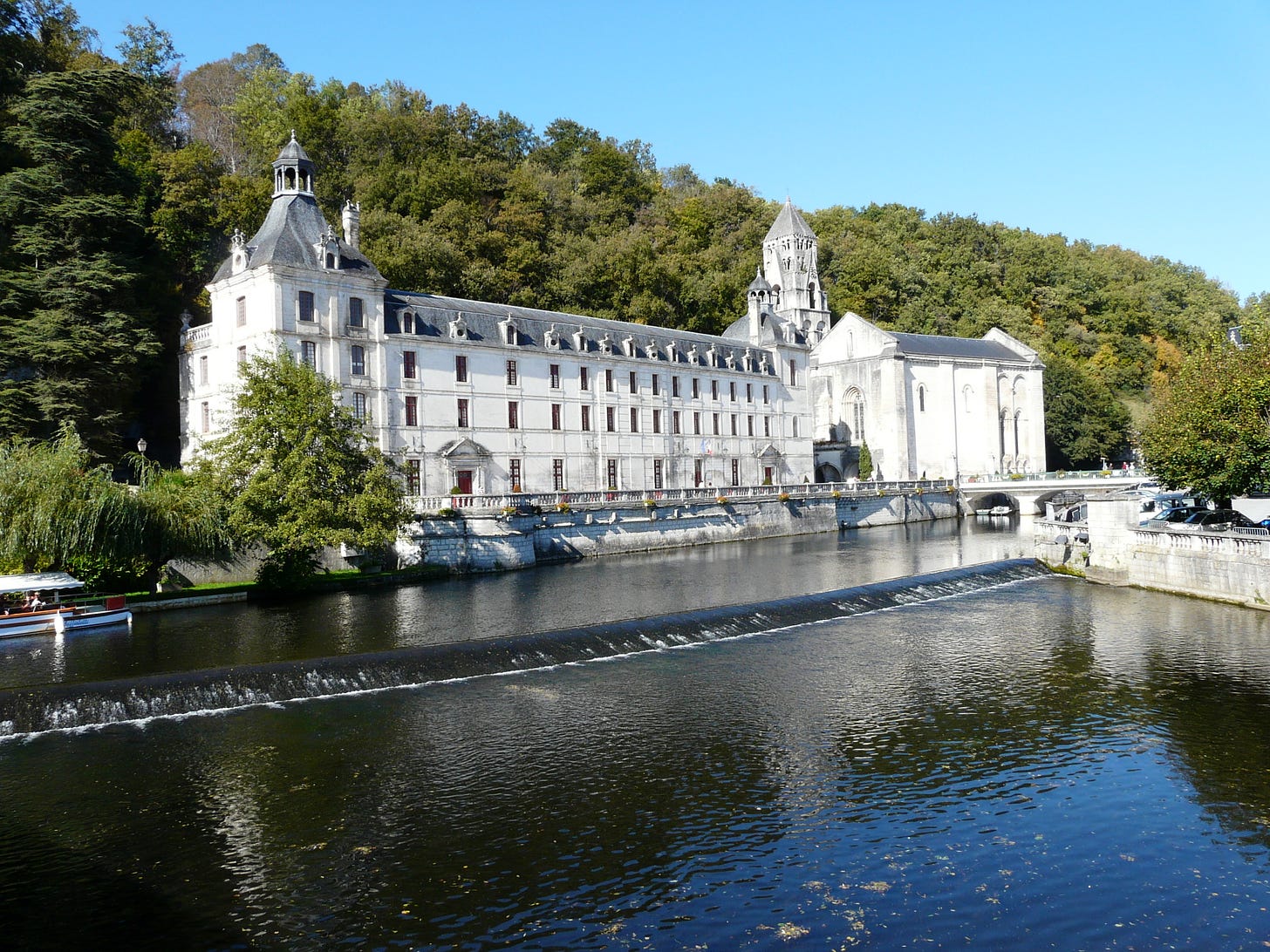Portraits of France: Brantôme in Périgord
The prettiest village on the unassuming Dronne River was once a haven for monks. The monks are long gone, but the medieval architecture and the sounds of water everywhere remain.
The Périgord, a lushly forested plateau cut by deep river valleys, is a justly celebrated region of France, noted as much for its grottoes and painted caves as for its truffles, foie gras, and wild mushrooms. Though most visitors head straight for the Dordogne River, farther north the unassuming Dronne flows through poplar-lined meadows and cliffs topped with oak and chestnut trees. No doubt the prettiest village along its course is Brantôme, a dense cluster of old stone houses on an island created by a fork in the river.
It is a place made for a picture postcard. Weeping willows and sycamores line the river banks, and everywhere you go, there is rushing water. Next to a grove of lime trees, a bridge leads across the water to an imposing old abbey, and just downstream the wheel of an ancient mill still turns with the current. According to one tradition, an earlier abbey on this site was founded by Charlemagne in 769. But then another tale claims it was founded by the medieval king Pépin le Bref, and yet another says it was founded a century later by Pépin d’Aquitaine.
Whatever the case, the monks are long gone, and the 18th century abbey buildings now house the town hall and a museum. As for the mill, today it is a famous restaurant—appropriately called Le Moulin de l’Abbaye—where chef Christian Ravinel, originally from Lyons, brought a modern flair to the classic cuisine of the Périgord.
Students of architecture, or even those just mildly interested, will appreciate the old town. Along the narrower streets are traces of Brantôme’s medieval origins, including arched stone doorways and fluted chimneys still pouring forth wood smoke. More common, however, are buildings from the town’s Renaissance heyday, including a parish church constructed in 1504 and houses with intricate stone-worked windows, as well as the more severe facades of several 19th century neoclassical structures.
If you are feeling energetic, you can walk along the medieval road that heads out of Brantôme and circles up onto the hill called la Garenne, which dominates the town and the river. From here a quiet trail leads through meadows to a point where you can take in the whole scene at once. Or, you can simply stroll past the old mill and over the 16th century elbow-shaped bridge to the Monk’s Garden, sit down on an ancient stone bench, and listen to the ducks quacking.
Indeed, even the most cosmopolitan visitor to Brantôme will find the monastic life oddly tempting.







As a very frequent visitor to France (plus a French wife) I am really enjoying this series of deftly written cameo portraits of highlights. — Bob Martin